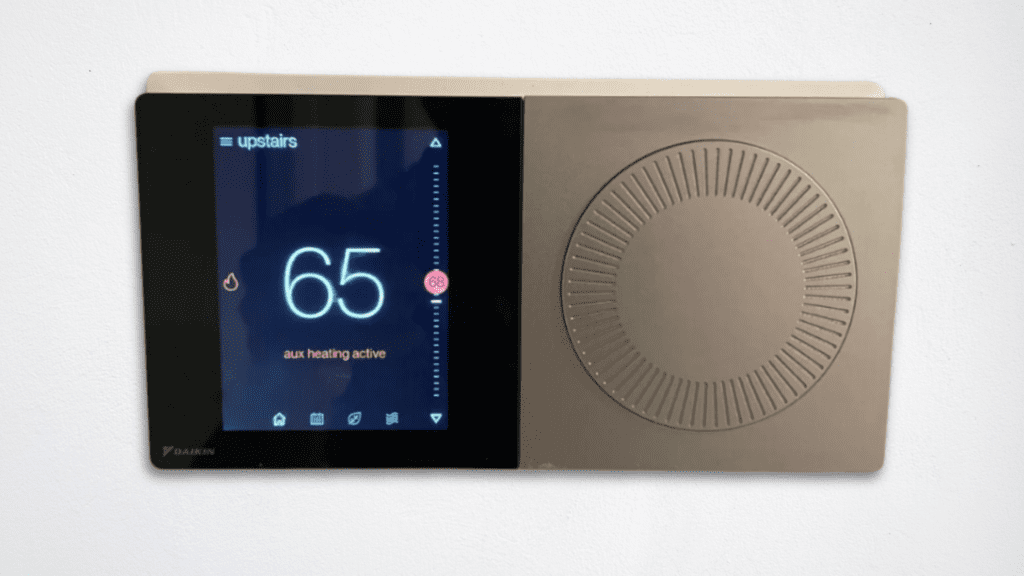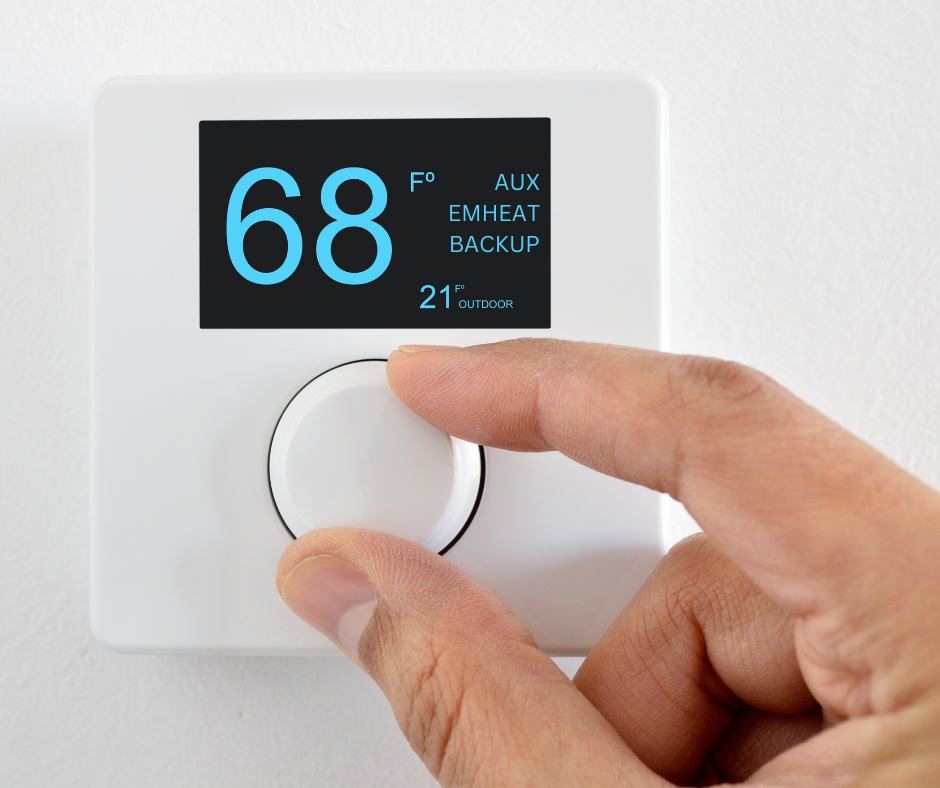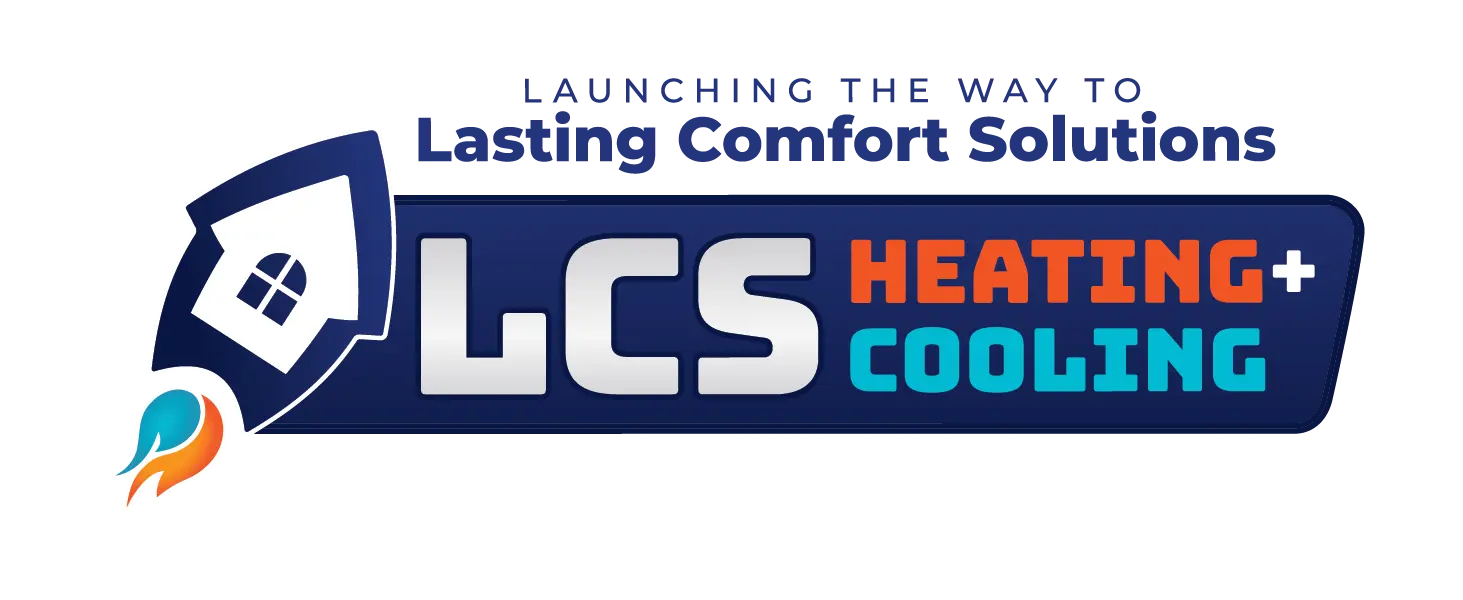Decoding HVAC Jargon: Emergency Heat, Auxiliary Heat, and Backup Electric Explained!
When temperatures drop, we understand the importance of a reliable heating system to keep you warm and cozy. But have you ever scratched your head trying to figure out the difference between emergency heat, auxiliary heat, and backup electric in your HVAC system? Don't worry, you're not alone! We’re going to break it down in simple terms to help you make smart choices this winter.
Auxiliary Heat: The Trusty Sidekick
 First, let's talk about auxiliary heat – the trusty sidekick to your electric systems that are heat pump and electric furnace. In most cases, auxiliary heat works alongside your heat pump to provide that extra boost when needed. Think of it as your HVAC system's way of saying, "I've got your back!"
First, let's talk about auxiliary heat – the trusty sidekick to your electric systems that are heat pump and electric furnace. In most cases, auxiliary heat works alongside your heat pump to provide that extra boost when needed. Think of it as your HVAC system's way of saying, "I've got your back!"
Standard heat pumps are efficient down to about 35 degrees outside. When it gets colder than that, they have a hard time keeping up on their own, so the electric furnace kicks in to assist. This furnace uses electric resistance coils to help maintain your desired indoor temperature. The colder it gets outside, the more the electric furnace runs to assist. While the electric furnace is running, some thermostats will show AUX.
Auxiliary heat is not efficient, however, so expect utility bills to be higher when it's really cold outside. However, this is some potential relief in sight: more efficient heat pumps called cold climate heat pumps have been developed more recently. They are efficient down to about 5 degrees outside, utilizing less backup electric from your electric furnace. This is great news for your utility bills!
Emergency Heat: Your HVAC Superhero
Imagine this scenario: it's the coldest night of the year, and your heating system is working overtime to keep up. Suddenly, something goes wrong—your heat pump struggles. Emergency heat to the rescue!
Emergency heat is a superhero because if a heat pump breaks down, you can use it to generate heat in your home. Keep in mind that switching the thermostat to emergency heat should only be done if you know the heat pump is not working properly. Like auxiliary heat, emergency heat can be expensive to run if your home is fully electric, so you'll want your heat pump checked out immediately.
Overall, in Indianapolis where winters can yo-yo from mild to downright harsh, having a reliable emergency heat source, like a gas furnace, ensures your home stays warm and toasty even on the coldest nights.
Backup Electric: Another Name for the Same Option
Last but not least, let's talk about backup electric. This feature is like the contingency plan in case your primary heating source experiences a hiccup. For example, if your heat pump malfunctions, backup electric heat strips can step in to keep things warm while you schedule a repair.
While backup electric heat is a reliable Plan B, it's essential to use it sparingly. Electric heating can be more expensive than other options, so consider it your safety net rather than your go-to heating source.
The Difference
 So what’s the real difference between these three? In case you haven’t figured it out yet, emergency heat and auxiliary heat are technically the same thing: with both, your electric furnace is providing heat. However, with auxiliary heat, the electric furnace is assisting your system. In emergency mode, the electric furnace is running alone because the heat pump is locked out.
So what’s the real difference between these three? In case you haven’t figured it out yet, emergency heat and auxiliary heat are technically the same thing: with both, your electric furnace is providing heat. However, with auxiliary heat, the electric furnace is assisting your system. In emergency mode, the electric furnace is running alone because the heat pump is locked out.
And now you might guess that backup electric is just another term for emergency heat, auxiliary heat, or electric furnace!
So, while there’s not a huge difference between the three, it’s important that you know what these phrases mean in order to make informed decisions about your comfort during the coldest days of Indianapolis winters.
At LCS Heating and Cooling, we're here to ensure your HVAC system is in tip-top shape, ready to tackle whatever Mother Nature throws your way. If you have any questions or need assistance, contact us today – we're always happy to help our fellow Hoosiers stay warm and cozy! Stay toasty, Indy!
We all want our homes to be comfortable year-round. In the summer, we want to stay cool. During winter, we seek heat. For some homeowners, a heat pump can give them the best of both worlds!
These types of units are often super energy-efficient because they use heat that’s already present. By working with both indoor and outdoor air they can balance—or rather, counterbalance—whatever temperature you want inside. A heat pump can be a great asset. But when it’s not working properly, no one’s happy.
How Heat Pumps Work
If you want to understand heat pumps, it’s good to know that they aren’t too different than an air conditioner or refrigerator. Think about it this way: The coils on the back of the fridge always feel a little hot because the refrigerator works to pull warm air out. That’s why everything in the box stays cool. The same goes for air conditioning units. They’re made to extract heat from the air, and then sort of “exhale” it outside.
They have similar parts and similar purposes to air source heat pumps, but the heat pump has one unique advantage. Both refrigerators and A/C units work to keep places cool. What’s neat about heat pumps is that they work to both cool and heat a home. Here’s the shortlist of what they’re made of:
- Compressor
- Liquid Refrigerant
- Fans/Fins
- 2 Sets of Coils—one for indoors, the other for outside
- Reversing Valve (this is what makes the heat pump different)
Their overall goal of a heat pump is to move heat from one area to another. The compressor works to circulate refrigerant between the two coil sets. And that refrigerant either absorbs or releases heat—depending on the coil set—to get your indoor temperature just right. The fans help move the air around so when you’re ready to switch seasons, your cooling unit can become a heating unit.
Switching the thermostat from heat to cool, or vice versa, will cause the reversing value to switch the direction flow of refrigerant. At that point, the hot air will move in the opposite direction. Rather than “exhaling” the air outside, as it does in the summer, it “exhales” the air inside, producing efficient and economical heat.
Since they do double-duty, heat pump systems can run in any season. They push hot air outdoors in warmer months, and then pull warm air indoors when it’s cold. It’s all with a flip of the switch. Pretty cool, right?
Pros and Cons
Heat pumps have a big appeal for cutting energy costs because they don’t have to exert as much energy creating the heat. They simply use the heat that’s already present and move it to where you need it. Some people don’t realize that there’s still some amount of heat in the air even in cold weather. The little heat pump can still do its thing in winter because it draws in all the heat it can find outdoors and sends it inside.
So as long as outdoor temperatures aren’t super-low, the heat pump can easily be the only heating source for a home. For moderate climate areas, these units can save big bucks on energy costs. It’s when the thermometer drops that it might need backup. As a general rule, this tends to happen when it falls to 30 degrees or below outside.
Because a heat pump isn’t the most effective heating source in below-freezing temps, it might need to be partnered with another supplemental heat source, like a furnace or an air handler, during extreme winter weather. If you’re unsure about your area’s limits, it’s a good idea to consult with a local professional. The right heating and cooling setup can keep your home comfortable and energy-efficient year-round.
Heat Pump Maintenance
Like other HVAC units, a heat pump will last longer with annual maintenance. In addition to annual maintenance, A lot of heat pump users also extend the lifespan of their unit (10-12 years is average) by changing the filter on a regular basis, or about once a month for consistent use. Other than that, just keep the fans and coils clear of debris and you should be set!
If other problems arise, you might need to call on a professional. They can help you diagnose any heat pump repairs by doing all of the following:
- Check indoor coils, ducts, or filters for obstructions
- Seal leaking ducts and ensure adequate airflow
- Confirm proper refrigerant charge (and no leaks)
- Inspect electric terminals, and clean or tighten connections
- Lubricate interior motors, and check belts for tightness and wear
- Test reverse valve and thermostat operations
A heat pump can help keep energy costs low throughout the year—but only as low as it’s properly maintained. A neglected heat pump can end up wasting as much as 25%. So as long as you have a heat pump, you’ll want to keep it in good working order to get those energy savings.
Whether you want to be warmed up or cooled off, a heat pump is a great solution for home comfort. If it’s not doing its job, call in a good heat pump company. A few repairs might be able to put it back on the right track.
September 29, 2016
Big news in 2015 for the HVAC industry! Have you heard!? There's a new Seer minimum in place! Okay, let's be honest, unless you're in the HVAC industry working with this every day, this is likely not very exciting news. There's a pretty good possibility that you haven't even heard about it! We're here to explain what the new minimum is, what it means, and how it affects you.
A Seer rating is an energy efficiency rating on air conditioners and heat pumps. At the end of 2014, the minimum Seer rating was 13 seer. The new minimums affect some parts of the United States differently than others. For these purposes, the U.S has been divided into a North Region, South Region, and Southwest Region. Since we're located in Indianapolis, we'll focus on the change in Indiana, which is in the North Region.
What is the new minimum? Effective 01/01/2015, the new minimum Seer rating for heat pumps has changed from 13 Seer to 14 seer. For now, air conditioners are staying the same at 13 Seer.
What does this mean? 13 seer heat pumps are no longer being manufactured. When you are ready to replace your current heat pump, you'll likely be quoted at least a 14 Seer. A 14 Seer heat pump will come at a higher initial cost than a 13 seer heat pump but there's also more energy savings with a 14 Seer.
Can I still get a 13 seer heat pump? For a while, there will be 13 seer heat pumps that were manufactured in 2014 or before that are still available. The entire U.S. has moved to a minimum 14 Seer heat pump rating, so once those 13 seers that were manufactured in previous years are gone, they're gone.
Does this affect me now? We saw an advertisement recently in which the message was implying that everyone had to replace their heat pumps now to adhere to the new standards. This is simply not true. The new standards are for new equipment going forward. The new standard does not say you have to upgrade right now! It's not illegal to currently have a 13 seer heat pump installed in your home. It just means that when it's time for new equipment, 14 seer is the minimum.
Does this affect me if I have an air conditioner? No, it does not! The new standard in Indiana is for heat pumps only. Eventually, yes, air conditioners will also move to a minimum 14 seer rating but it's not happening this year in Indiana or any of the North Region. In other states (the South and Southwest Regions), the minimum has already changed for both air conditioners and heat pumps.
We hope this helps to answer your questions about the new minimum seer ratings!
March 24, 2015
Why Is My Air Conditioner Low on Refrigerant Every Year?
There seems to be a belief among some homeowners that air conditioners have to be filled with refrigerant each year. Homeowners begin to think it's normal to have an HVAC company come out to top off their refrigerant. If this sounds familiar, read on! It's time to solve this refrigerant mystery!
If you have to have refrigerant added to your air conditioner or heat pump each year, then you have a leak somewhere in your system. Refrigerant is not supposed to leak out or evaporate away. The leak could be in the line set, in the coil or in the condenser itself. The amount of refrigerant that you lose will depend on the size of the leak.
What happens if you don't do anything about the leak? Well, eventually the air conditioner will freeze up and quit working. It may be hard to believe but your air conditioner could turn into a block of ice on a 90 degree day! This is quite the inconvenience because the system has to be turned off so the ice can melt before a technician can even work on it. It doesn't take long to get hot in the house when it's 90 degrees outside! In addition, a system that runs without the correct amount of refrigerant is like a car that is driven low on oil. Will it operate? Yes, but it's highly likely that damage will occur from the system running year after year low on refrigerant.
While people may ask to just have refrigerant added, that's really not the best option. The cost of R-22 refrigerant is rising dramatically. This is because R-22 is being phased out and R410 is taking it's place. So if you have an older HVAC system that uses R-22 refrigerant, it might cost you double or triple what it's cost in the past to just add refrigerant. There's no warranty on refrigerant either so if you have it added and it leaks out a week later...you're just thrown away that money.
A leak search is going to make sense for a lot of people. The goal is to do a leak test to find the leak and make that repair. There are a couple different types of leak tests that can be completed. The location of the leak will determine the cost of the repair. It's not cheap...but then again neither is just adding refrigerant.
The only time it may not make sense to do a leak search and repair is if the air conditioner is very old (13-15+ years old). At that point, it may be time to compare the cost of a leak search and repair to the cost of replacing the unit.
Feel free to contact us at anytime if you have questions about your own system!


